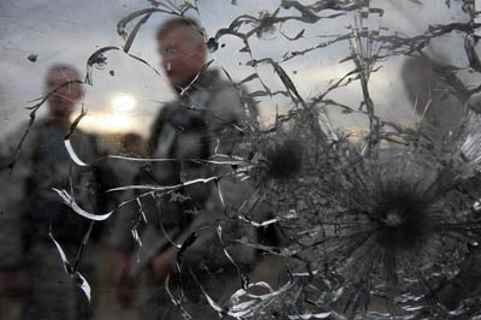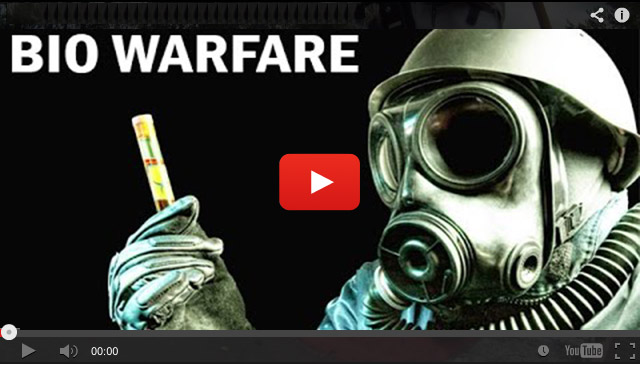Bulletproof glass (also known as ballistic glass, transparent armor, or bullet-resistant glass) is a type of strong but optically transparent material that is particularly resistant to being penetrated when struck. Like any material, however, they are not completely impenetrable. It is usually made from a combination of two or more types of glass, one hard and one soft. The softer layer makes the glass more elastic, so it can flex instead of shatter. The index of refraction for both of the glasses used in the bulletproof layers must be almost the same to keep the glass transparent and allow a clear, undistorted view through the glass. Bulletproof glass varies in thickness from 3/4 in. to 3.5 in. (19 mm to 90 mm).
Bulletproof glass is used in windows of some types of buildings (e.g., jewelry stores, embassies) and vehicles (VIP limousines, military vehicles and military planes).
Find out more about using cold weapons for survival on Bulletproof Home.
Construction
Bullet-resistant glass is constructed using polycarbonate, thermoplastic, and layers of laminated glass. The aim is to make a material with the appearance and clarity of standard glass but with effective protection from small arms. Polycarbonate designs usually consist of products such as Armormax, Makroclear, Cyrolon, Lexan or Tuffak, which are often sandwiched between layers of regular glass.The ability of a glass itself to withstand shock is improved by the process of tempering. When treated with heating and cooling or with chemical processes, the glass becomes much stronger. The polycarbonate usually has one of two types of coating to resist abrasion: a soft coating that heals after being scratched (such as elastomeric carbon-based polymers) or a hard coating that prevents scratching (such as silicon-based polymers). The plastic in laminate designs also provides resistance to impact from physical assault from blunt and sharp objects. The plastic provides little in the way of bullet-resistance. The glass, which is much harder than plastic, flattens the bullet, and the plastic deforms, with the aim of absorbing the rest of the energy and preventing penetration. The ability of the polycarbonate layer to stop projectiles with varying energy is directly proportional to its thickness, and bulletproof glass of this design may be up to 3.5 inches thick
A Prepper’s Guide in Safeguarding a Home
Laminated glass layers are built from glass sheets bonded together with polyvinyl butyral, polyurethane or ethylene-vinyl acetate. This design has been in regular use on combat vehicles since World War II. It is typically thick and is usually extremely heavy.
We will test out the homemade bulletproof glass that Ave channel sent us to shoot. Because of poor weather and a million other excuses, it took me a couple months to finally get around to shooting this. The sun came out today for a while, so I hopped in my truck and brought this to the range. Would they even let me set this up on the range to shoot it? Heck yeah!
Bulletproof Armor
The major factors effecting a bullet’s ability to penetrate through a barrier are the following:
1#. Speed: The velocity of a projectile is the most significant factor of a projectile’s ability to penetrate through a barrier. Example: A M193 pushed through a 16” barrel traveling at a muzzle velocity of 3100 fps and cannot penetrate through AR500 LVL III plate less than 25 yards away. The same cartridge out of a 22” barrel travels at a muzzle velocity of 3300+ fps and can penetrate AR500 LVL III plate. This as well as the use of military sabot rounds out of anti-tank weapon systems demonstrates the importance of speed when it comes to penetrating armor.
2#. Bullet Construction: The way a bullet is constructed is almost as equally important to speed. Bullet compositions of FMJ with lead or mild steel cores are capable of penetrating barriers to a significant extent when compared to hollow point, soft point, or ballistic tipped projectiles at the same velocity. This is observable through several military tests as well as commercial manufactures’ tests for armored and non-armored targets. Likewise, penetrators comprised of high carbon steel or carbide will resist deformation during its interaction with a barrier maximizing its energy at a single point (see cross sectional area). Example M193 vs M855 vs M855A1 at a distance of 300 yards have significant differences in penetrating capability on barriers.
3#. Momentum: The Mass x Velocity of a projectile directly relates to the projectile’s capability to penetrate through a material when compared to similar projectiles. This is one of the most tested and well know factors as tested by military, and civilians (hunters) while taking on tanks or large game.
4#. Cross-Sectional Area: The bullet’s 2d circular area as well as its initial penetrating contact point relate to all of the above factors of penetration as well as how the bullet interacts with the contacted material. Pointed bullets will penetrate better than round nose; round nose will penetrate better than flat nose.

The armor components that I have been working with are used as a system that utilizes the strongest material properties of each individual component as a means to combat the bullets penetrating capabilities. The materials that I use are broken down into three different categories.
1#. Ceramic Front Plate: The ceramic plate has a relatively high compressive and shear strength and that act to absorb the energy of the bullet and degrade its material and shape. Ceramic tiles are available in different ratings. The PEI5 rating is the strongest and hardest tile available at an inexpensive price. The ceramic tile strips away the copper jacket and exposes the softer lead core. The front cross-sectional area also increases allowing the rear plate to have a larger surface area to spread the remaining energy of the bullet on.
2#. Fabric Back Plate: The layered fabric plate is comprised of any fabric that has a tight weave and is strong under tension. The fabric back plate exhibits a high tensile strength as well as a minimal amount of shear strength. Fabrics such as denim, canvas, nylon, Kevlar, or fiberglass can all be used for this purpose and should be comprised of 8 layers at minimum. Fabric can also be wrapped around the entire plate to capture spall fragments exiting out the sides and front of the plate. Denim has displayed the greatest strength per dollar spent. Layer per layer it seems to provide better strength than fiberglass. However, this is also due to the extra thickness it gives the plate and weight. Denim is easy to work with due to its ability to stay together and not fray when compared to fiberglass. Denim and canvas can be purchased at Walmart or any fabric store by the yard, or it can be salvaged off of old garments. Products like Kevlar or fiberglass is best purchased online in bulk to get the best value.
3#. Adhesive: Adhesives when applied and impregnated into the fabric layers increases the tensile and shear strength as well as provides compressive strength to the composite material. Almost any type of adhesive has seemed to increase the layered fabric’s material properties. However, construction adhesive that is of polyurethane base like Locktite Premium Proline 3x Strong construction adhesive has proved to be extremely resilient, reduces back-face plate deformation, and has multi hit capability. The adhesive can also be applied to the whole surface of the ceramic tile to reduce spall.
source : youtube.com
In this video I test out my homemade fiberglass ballistic armor. Will it stop a bullet? Watch to find out!
Books can be your best pre-collapse investment.
Carnivore’s Bible (is a wellknown meat processor providing custom meat processing services locally andacross the state of Montana and more. Whether your needs are for domestic meator wild game meat processing)
The Lost Book of Remedies PDF ( contains a series of medicinal andherbal recipes to make home made remedies from medicinal plants and herbs.Chromic diseases and maladies can be overcome by taking the remediesoutlined in this book. The writer claims that his grandfather was taughtherbalism and healing whilst in active service during world war twoand that he has treated many soldiers with his home made cures. )
Easy Cellar(Info about building and managing your root cellar, plus printable plans. The book on building and using root cellars – The Complete Root Cellar Book.)
The Lost Ways (Learn the long forgotten secrets that helped our forefathers survive famines,wars,economic crisis and anything else life threw at them)
LOST WAYS 2 ( Wordof the day: Prepare! And do it the old fashion way, like our fore-fathers did it and succeed longbefore us,because what lies ahead of us will require all the help we can get. Watch this video and learn the 3 skills that ensured our ancestors survival in hard times offamine and war.)
Survival MD (Best Post Collapse First Aid Survival Guide Ever)
Conquering the coming collapse (Financial advice and preparedness )
Liberty Generator (Build and make your own energy source)
Backyard Liberty (Easy and cheap DIY Aquaponic system to grow your organic and living food bank)
Bullet Proof Home (A Prepper’s Guide in Safeguarding a Home )
Family Self Defense (Best Self Defense Strategies For You And Your Family)
Survive Any Crisis (Best Items To Hoard For A Long Term Crisis)
Survive The End Days(Biggest Cover Up Of Our President)



